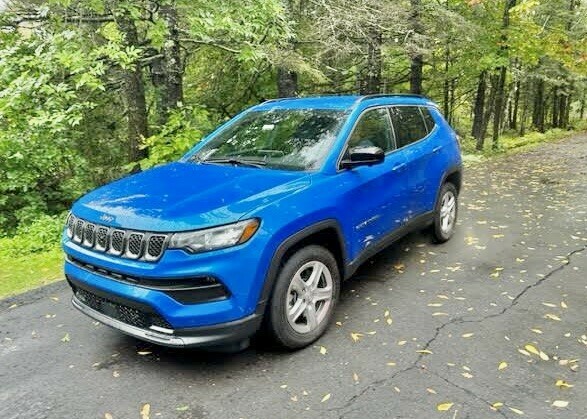News & Articles
Browse all content by date.

It wasn’t long ago when someone mentioned a Jeep, you immediately conjured up the image of a rugged off-roading Wrangler, but that might be showing our age.
Actually, it was many years ago that Jeep diversified into all sorts of family vehicles, including the wonderfully versatile Cherokee, Grand Cherokee and, more recently, the return of the Wagoneer and Grand Wagoneer. Jeep also aimed at going smaller, with the Compass and the Renegade, as well as specialty vehicles such as the Gladiator. It is possible to review a new Jeep every month and not feel as though you’d done justice to the whole realm of Jeeps.
The luxury revisions that Jeep has made under the Stellantis ownership has been remarkable, and you will be hard-pressed to find a more luxurious interior than the Wagoneer and Grand Wagoneer, which has allowed its features to migrate down into the Grand Cherokee bracket as well.
In looking over the newest of Jeeps, the compact Compass has made a quantum leap in sophistication, moving from being what almost seemed as an afterthought into a vehicle that could be considered front-line help in the ongoing battle with competitors who are constantly trying to chip away at Jeep’s name popularity.
The Compass was OK for those moving from, say, the Wrangler toward the Cherokee, and it came with a 2.4-liter engine that began its life with Jeep as part of a multi-corporation partnership with Hyundai and Mitsubishi. Hyundai made the 2.4, and it served all its customers well for many years, but technology and refinement have led to alternatives, and for 2023, Jeep has gone to its own Chrysler-built storehouse to place the 2.0-liter turbocharged 4-cylinder, which feels much stronger and peppier. That same engine is used in the larger Cherokees and even the Wagoneer, because it can be tuned to develop more power and feel stronger than some V6es.
Jeep also slid its very smooth 8-speed automatic into the Compass, replacing the 9-speed that always seemed to want to hunt and shift more jerkily than necessary. The 8-speed is just another example of the refinement Jeep is capable of, and which benefits the Compass. The Compass exterior has graduated too, looking a lot like a downsized Cherokee instead of a pieced together model from the parts bin. Hooked up to Jeep’s legendary 4-wheel drive system, the powertrain gives the Compass the ability to climb hills and rough terrain and a mild off-roading you might select.
But arriving in Laser Blue Pearl Coat, and with the Latitude option package, the test Compass felt a lot more like a capable family hauler, with room for four or five, adequate storage space, and all the latest conveniences in connectivity and safety. Compass also gets the corporate U-Connect system with wireless charging as well as a larger screen for information that aids in backing up and locating you in parking slots.
The base Compass starts at $32,395 and escalates via the option bin to a final $39,535. With electronic stability control and such features as LED lights, including foglights, autostart, 360-degree camera aid, the Compass now offers features you used to have to get up to the Cherokee to obtain.
That spirited 2.0-Turbo engine also can get you more than 30 miles per gallon, which is another contribution to the new Compass’s contemporary refinement. If you used to shop for the larger and more refined Cherokee, don’t change your view, but also don’t pass by the chance to evaluate the less-expensive Compass as you stroll across the showroom.
| Tweet |


